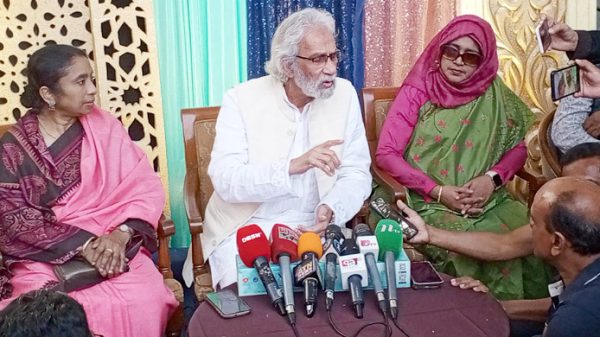Tiger census: Installation of cameras begins in Sundarbans

- Update Time : Sunday, 1 January, 2023, 03:55 pm
- 126 Time View

The Daily Morning Voice Online Desk: The Forest Department has started setting up a total of 1,330 cameras at 665 spots in the Sundarbans to count tigers, deer and pigs. Abu Naser, forest official of Sundarbans West zone and director of Sundarbans Tiger Conservation Project, said the camera installation work started at Kalabogi Ecotourism Center around 9am on Sunday, reports UNB.
The Forest Department – under the ‘Sundarbans Tiger Conservation Project’ involving Tk 3.27 crore – took preparations for installing cameras on both sides of the canals under Kalabogi Forest Station of Khulna Range from December 15 last year. Abu Naser said apart from counting tigers, this year, the Forest Department will count deer and pigs as well under the project. They have divided the project into two categories – camera trapping and canal survey. Primarily, the survey along both sides of the canals in Sundarbans has started and through the process, the movement and pugmarks of tigers will be pointed out.”
Through the camera trapping process, the authorities concerned will take snaps for two years and later they will analyse the photos captured for the next two months, and after that they will figure out the numbers, he said. A technical committee has already been formed and the committee decided to install cameras at 665 spots, he added. Of these, 200 will be set up in Satkhira range, 140 in Khulna range, 180 in Sharankhola and 145 in Chandpai range of the Sundarbans, said Abu Naser. Two cameras will be installed in each grid and a total of 1,330 cameras will be set up.
Asked about the number of tigers, the project director said, “The exact figure of tigers will be known after the census. Earlier, it was difficult for tourists to see any tiger during their Sundarbans visit but now, they can take photos of 3-4 tigers which indicates that the number might have increased.” The tiger census will be conducted in and outside the wildlife sanctuary and the authorities concerned will conduct the survey in the less, more and most saline areas of the Sundarbans, he said. Tigers mostly hunt deer, but they also eat pigs, monkeys and crabs and another survey will be conducted to figure out their eating habits in 2024, he added.
Three hundred and forty members under 49 village tiger response teams and 185 members of community patrol groups under the four ranges will be given training to conduct the survey. Resident launches and support boats have been hired for four months under the projects while 200 special category cameras, battery, and SD cards will be purchased. Mihir Kumar Doe, forest conservator of Khulna Circle, said the project includes monitoring the movement by setting up satellite collars on two tigers, identifying diseases and infections among tigers, collecting data and publishing a report after research.
Besides, fire extinguishing equipment, pipes and drones will also be purchased using the funds to save tigers from forest fires during dry season. Alongside, an initiative will be taken to erect fences in 60 km areas of the Sundarbans, using nylon, to prevent the entry of tigers into villages, he said. Besides, 12 towers will be set up in the Sundarbans to protect tigers from cyclonic storms, said Mihir Kumar. Under the project, twelve consultant experts have been hired in the short term for special training, survey completion, data collection, preparation of report and analysis, he said.
On March 23 last year, the Ministry of Environment, Forest and Climate Change gave its nod to the project, involving Tk 35.93 crore. Of the project, only Tk 3.27 crore will be spent for tiger census and the tenure of the project is fixed from April 2022 to June 2025. There are 3,840 tigers in 13 countries of the world. In 2015, the number of tigers in the Sundarbans was 106 and in 2018, that number went up to 114. Of these, 63 are mature, 18 between the age of 12-14 months, and 33 are cubs.










